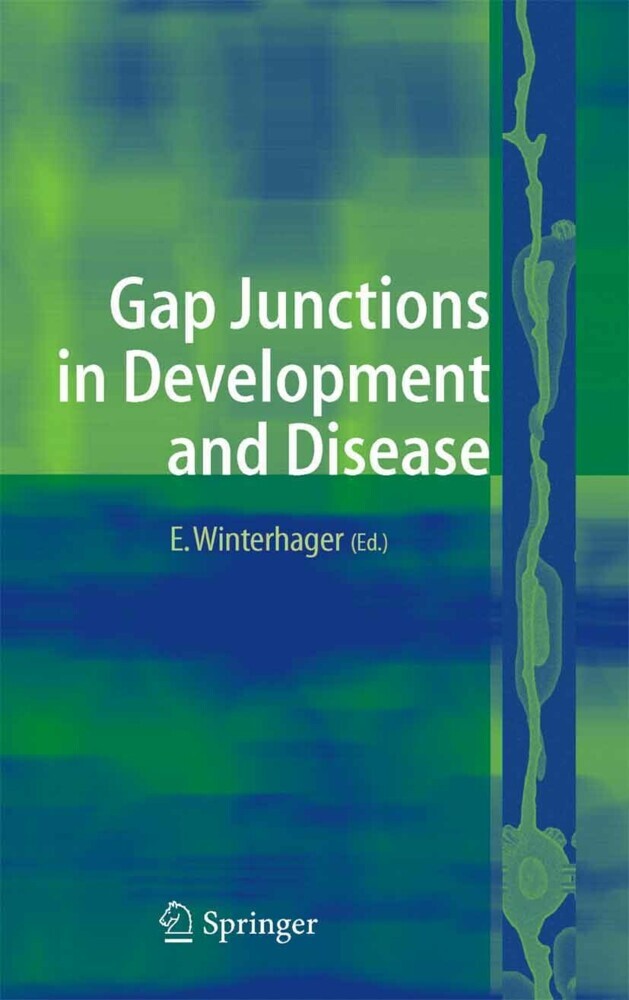Winterhager, Elke (Hrsg.)
Gap Junctions in Development and Disease

Beschreibung
Communication between cells via intercellular channels gap junctions appears essential to certain developmental processes and appropriate organ function. Gap Junctions in Development and Disease aims to describe the molecular events underlying impaired development and disease. Beginning with a comprehensive review of various mouse and human genes encoding the channel-forming connexins, later chapters describe several connexin mutations associated with human diseases such as hereditary deafness and female infertility. Erroneous signaling mediated by the interaction of mutant connexins with other proteins, thought to be responsible for dysfunction of organs such as heart, muscle, brain, skin, lens, placenta, and endocrine tissue in both mice and men, is also addressed.
Although the question of why some mutations in gap-junction proteins lead to specific phenotypes remains to be answered, the reviews in this book provide an intriguing insight into the future direction of this research field. The main objective of Gap Junctions in Development and Disease is to describe the molecular events that cause impairments in development and disease. Communication between cells via intercellular channels, so called gap junctions, appears to be essential for certain developmental processes and appropriate organ function. Starting with a comprehensive review of the various mouse and human genes encoding the channel-forming protein connexin, further chapters describe the most important connexin mutations that lead to diseases such as hereditary deafness and female infertility in humans. Erroneous signaling mediated via connexin-protein interactions, thought to be responsible for disfunction of organs such as heart, muscle, brain, skin, lens, placenta, and endocrine tissue in mice and men, is also addressed.
Although the question why some of the mutations in gap-junction proteins lead to a specific phenotype remains to be answered, the reviews in this book give an intriguing outlook on the future direction of this research field.
Although the question of why some mutations in gap-junction proteins lead to specific phenotypes remains to be answered, the reviews in this book provide an intriguing insight into the future direction of this research field. The main objective of Gap Junctions in Development and Disease is to describe the molecular events that cause impairments in development and disease. Communication between cells via intercellular channels, so called gap junctions, appears to be essential for certain developmental processes and appropriate organ function. Starting with a comprehensive review of the various mouse and human genes encoding the channel-forming protein connexin, further chapters describe the most important connexin mutations that lead to diseases such as hereditary deafness and female infertility in humans. Erroneous signaling mediated via connexin-protein interactions, thought to be responsible for disfunction of organs such as heart, muscle, brain, skin, lens, placenta, and endocrine tissue in mice and men, is also addressed.
Although the question why some of the mutations in gap-junction proteins lead to a specific phenotype remains to be answered, the reviews in this book give an intriguing outlook on the future direction of this research field.
Produktdetails
| ISBN/GTIN | 978-3-540-28621-9 |
|---|---|
| Seitenzahl | 279 S. |
| Kopierschutz | mit Wasserzeichen |
| Dateigröße | 8642 Kbytes |

